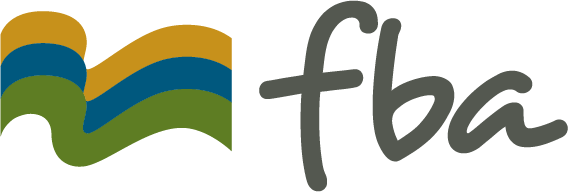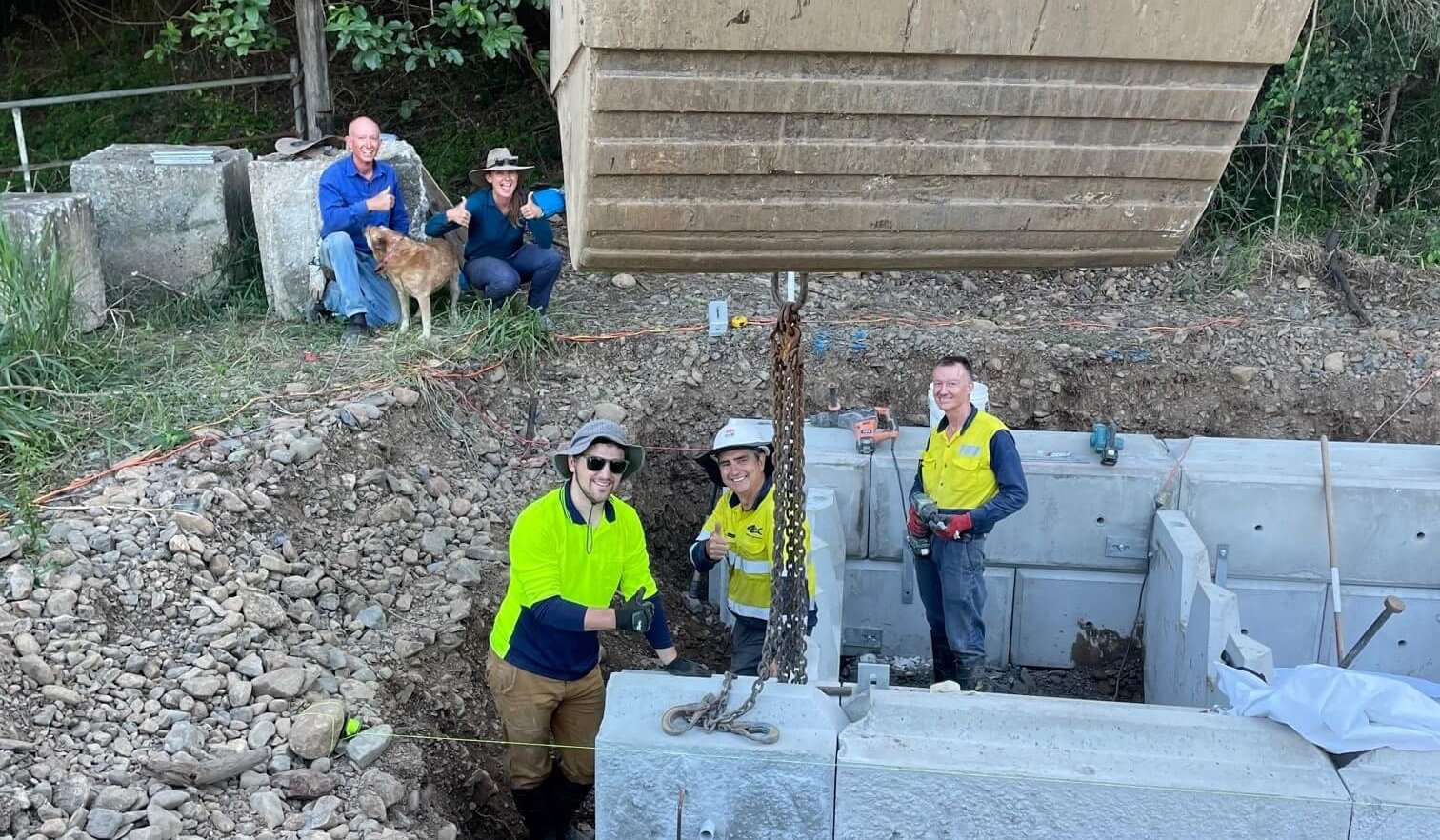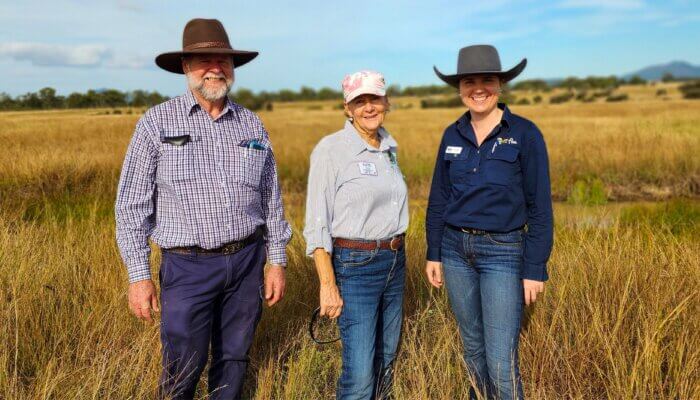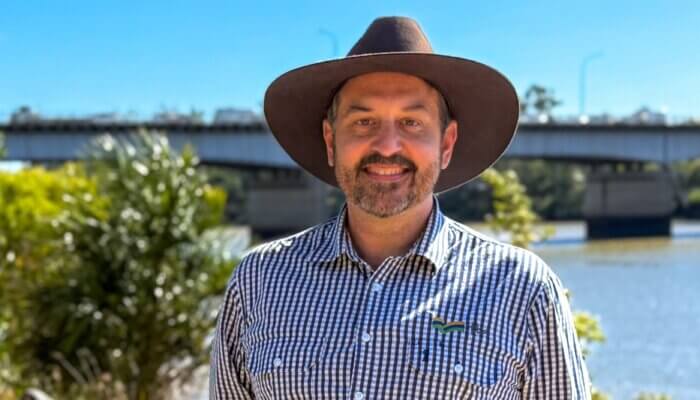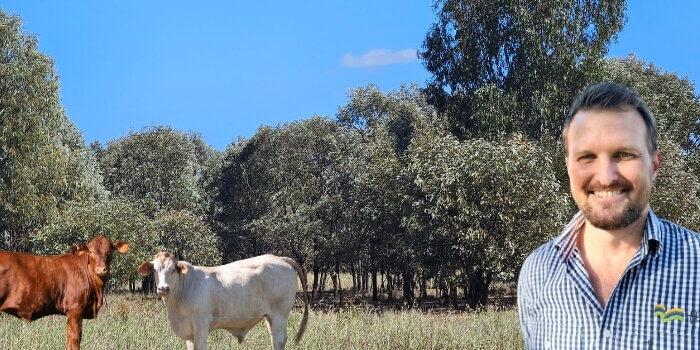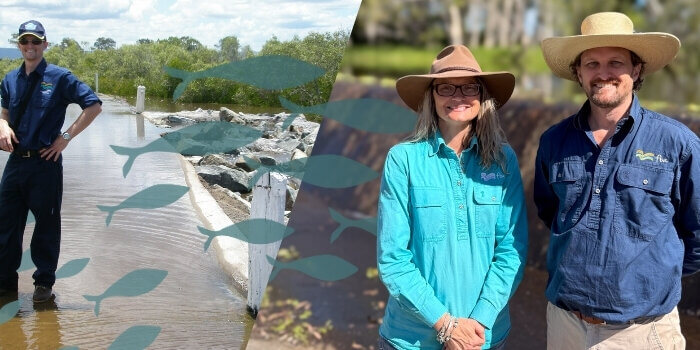
Restoring Fish Passage: A Triumph for Freshwater Ecosystems
Posted on September 12th, 2023
In the heart of the Fitzroy Basin lies a vital network of freshwater streams, home to around 50 species of fish. The migration of fish, both between marine and freshwater environments and within freshwater habitats, is an important part of their life cycle. Unfortunately, over time, instream barriers such as road crossings and weirs can reduce species diversity and harm aquatic ecosystems.
Fish passage is crucial for the survival and productivity of Australian fish species. Many, including Barramundi and Jungle Perch, rely on moving between habitats for breeding, raising young, accessing food, and seeking protection. However, the increase of dams, weirs, and culverts across Queensland’s waterways has made passage within these systems difficult or in some cases impossible, causing a decline in native fish populations.
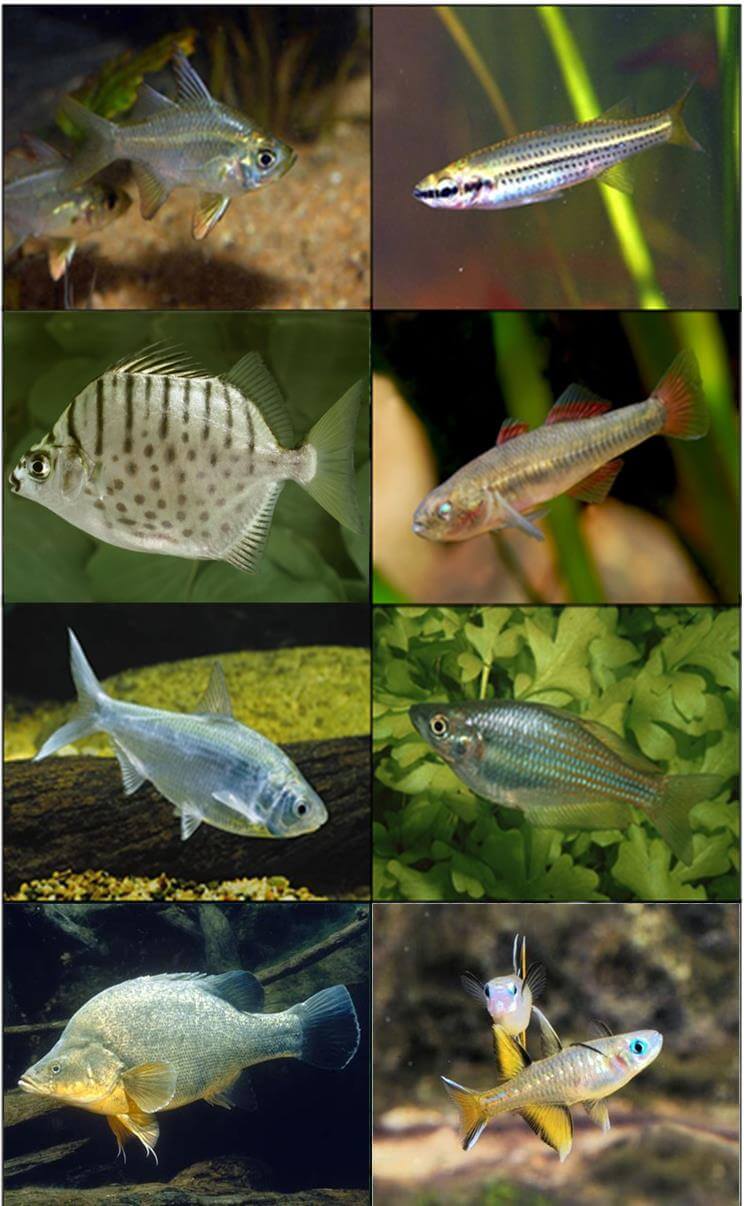
One such barrier, Mann’s Weir on the Boyne River, ranked 13th on the list of priorities for remediation in the 2019 update of the Fitzroy Basin Fish Barrier Prioritisation Project. Prior to the 2019 update, the weir was ranked as the 2nd worst barrier to fish passage in the CQ region however, the gravel weir had washed away at the time of the 2019 inspection.
Mann’s Weir is located on the bank of the Mann family’s property. The river runs off from Lake Awonga in Gladstone. Michael Mann contacted FBA roughly 4 years ago about the Weir with questions as to how he could build a high quality fishway at the weir.
The Mann’s have had their property for over 150 years so it comes as no surprise that Michael was passionate about jumping into action to help get this project done.
“Through FBA I made contact with Tim Marsden and Melinda Scanlon from Australasian Fish Passage Services and things evolved and we established that FBA had some funding available that could go towards a new fishway at this weir,” said Michael.
“Our property is on the river where the weir is so our family has been maintaining the weir in this area since around 1967. I personally started doing it in around 2007 when I acquired some machinery which allowed me to rebuild the weir much easier after flood events. I wanted to improve the quality of the upstream waterhole and improve fish passage past the weir. We initially installed a concrete block bywash which handled the environmental flow from the dam, and allowed fish passage on the higher tides. When we got the funding from FBA to improve the fishway it was myself and my brothers Jonathan and Anthony who were on the ground supplying the labour and a lot of the materials. Matt Richie from Holcim Concrete was another big contributor as well, he saw value in what we were doing and discounted over 100 concrete blocks for the project which is amazing. Overall, it was a lot of hard work and a lot of financial expense but the results have been great,” said Michael.
Michael joked, “I’ve always had a bit of interest in fish because I love fishing, the irony is all this work on the fishway and maintaining the weir has kept me away from fishing! But I have learnt a lot, especially through all the knowledge from Tim and the benefits from the project is something everyone in the area will get to experience and so will our kids and our grandkids.”
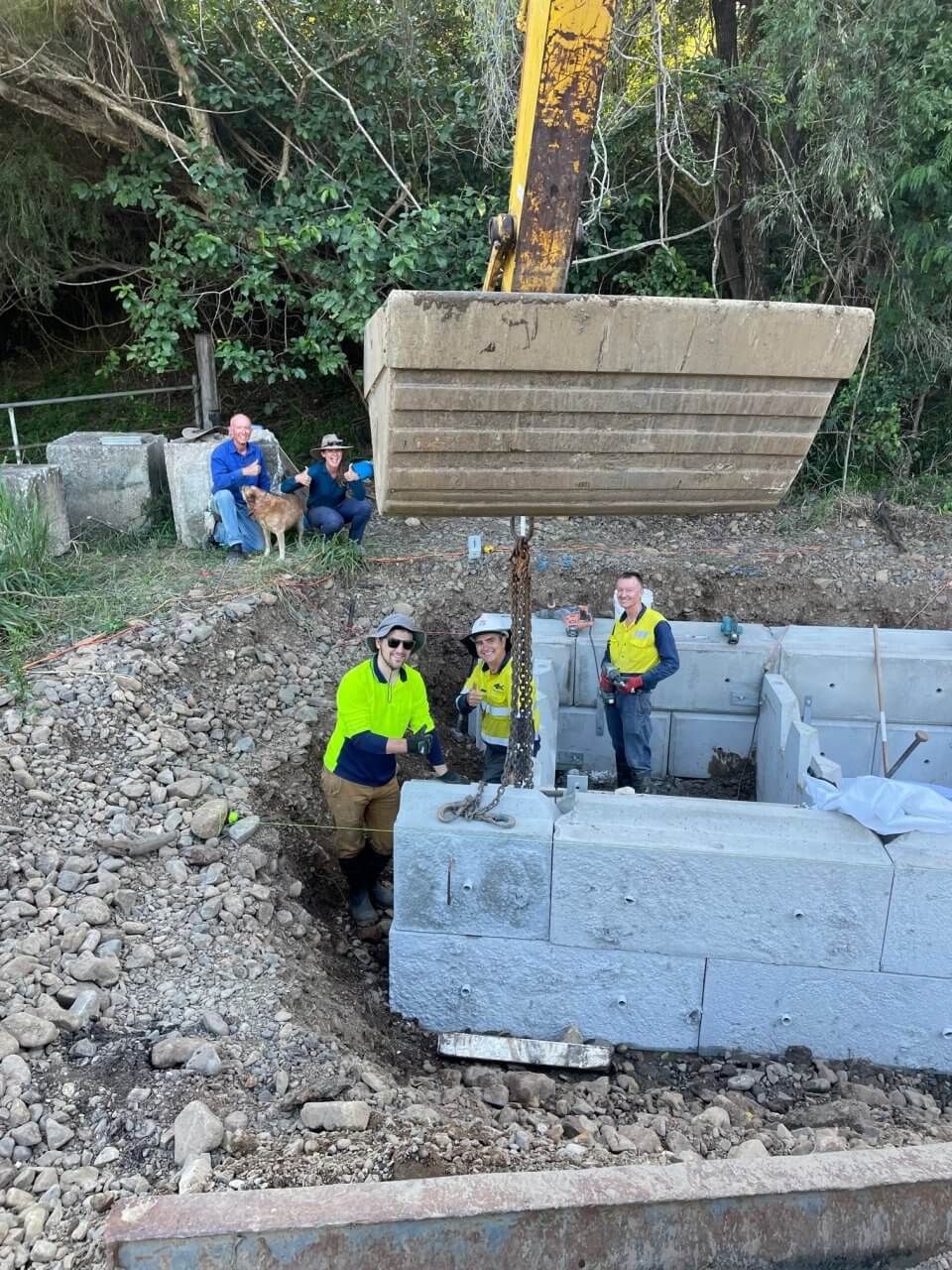
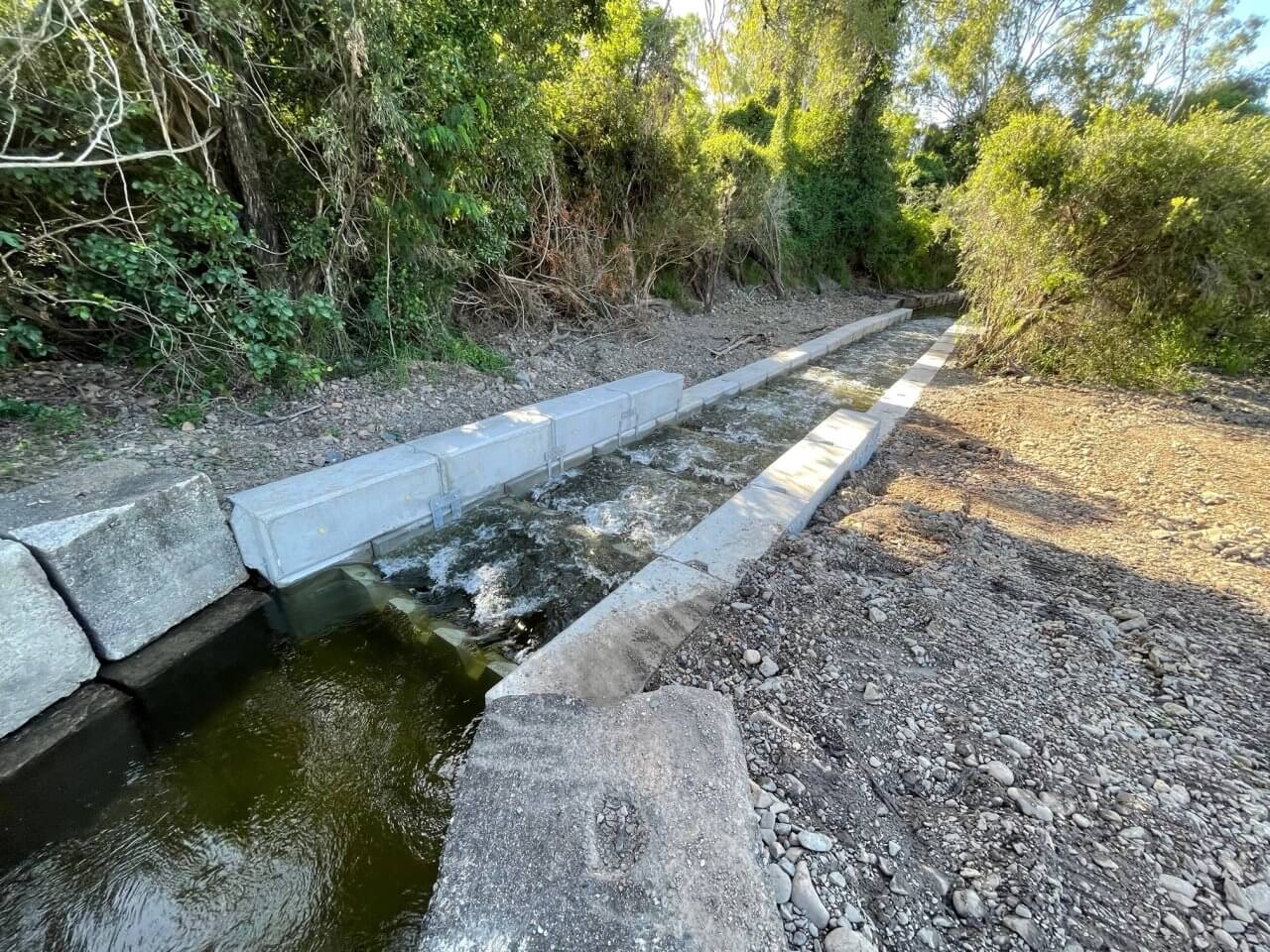
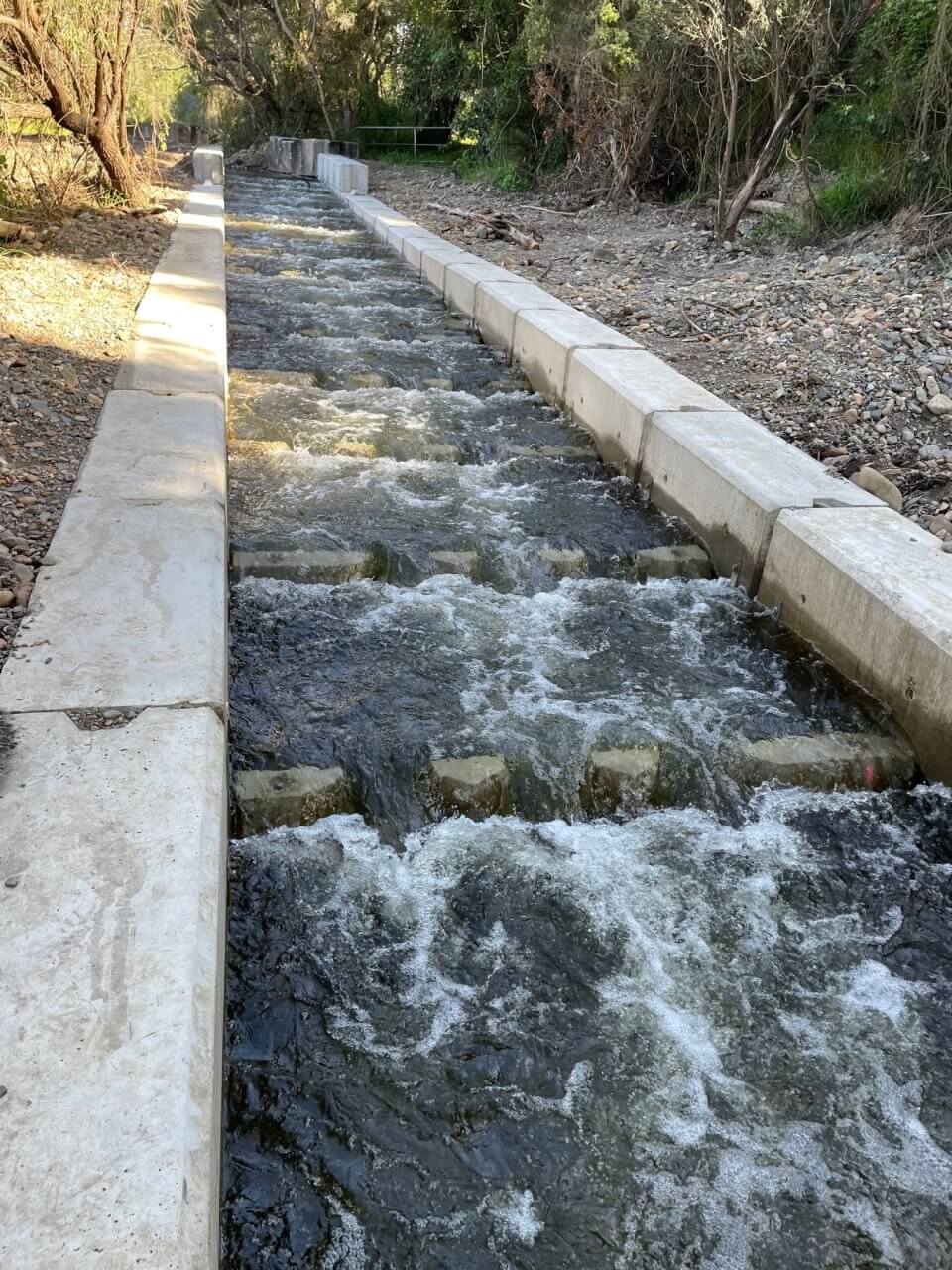

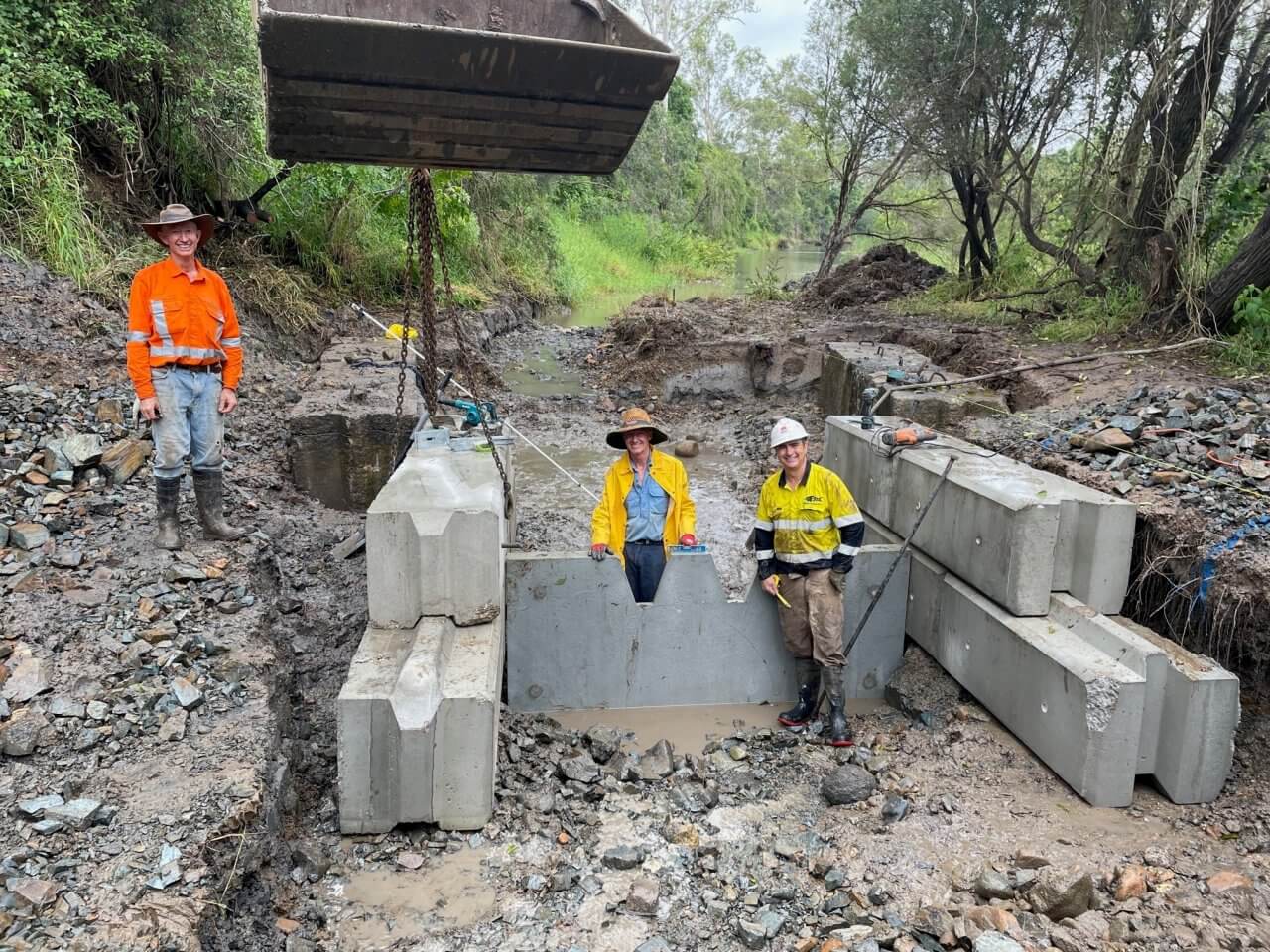
Projects like the Mann’s Weir fishway that facilitate the movement of fish through freshwater and tidal areas of the Boyne River fish populations encourage the regeneration of fish habitats and contribute to the natural restoration of the Boyne River’s fisheries resource and improve the health of the ecosystem.
Since its commissioning, the Mann’s Weir fishway has proven its effectiveness. Check out this video of it in action!
FBA’s Environment Coordinator, Mac Hansler led the project and worked closely with Michael to ensure its success.
“I really enjoyed working on the project and getting to visit the fishway construction site at Mann’s Weir. Mann’s Weir was unique within the Coastal Program, as the landholder [Michael] actively participated in the construction of the fishway. Working with landholders such as Michael and his family makes it all worthwhile. Construction of the fishway was successful through this collaborative effort and created a link to 52 kilometres of high-quality fish habitat for native fishes,” said Mac.
Michael hopes the work done will create a new respect for this natural asset.
“There is a freshwater hole that extends from Mann’s weir up past Pike’s crossing that is already showing improved water quality and fish populations because of the fishway. That area has the potential to become a great tourist and local attraction. I’d love to see people out enjoying it fishing and kayaking. I’d also love to see others in the area contribute and do their part for our waterways so we continue to see results like these,” said Michael.
This achievement in fish passage restoration is one of 6 new fishways and 2 improved fishways organised by FBA. Across these 8 structures, a total of 1,946 km of upstream habitat is more available for native fish species due to improved access.
Through determined efforts and partnerships, we’re creating healthier habitats, thriving fish populations, and a brighter future for our aquatic environments.
